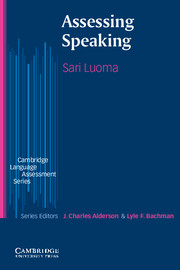Summary
In this chapter, I will present the way speaking is discussed in applied linguistics. I will cover linguistic descriptions of spoken language, speaking as interaction, and speaking as a social and situation-based activity. All these perspectives see speaking as an integral part of people's daily lives. Together, they help assessment developers form a clear understanding of what it means to be able to speak a language and then transfer this understanding to the design of tasks and rating criteria. The more these concrete features of tests are geared towards the special features of speaking, the more certain it is that the results will indicate what they purport to indicate, namely the ability to speak a language.
Describing spoken language
What is special about spoken language? What kind of language is used in spoken interaction? What does this imply for the design of speaking assessments?
The sound of speech
When people hear someone speak, they pay attention to what the speaker sounds like almost automatically. On the basis of what they hear, they make some tentative and possibly subconscious judgements about the speaker's personality, attitudes, home region and native/non-native speaker status. As speakers, consciously or unconsciously, people use their speech to create an image of themselves to others. By using speed and pausing, and variations in pitch, volume and intonation, they also create a texture for their talk that supports and enhances what they are saying. The sound of people's speech is meaningful, and that is why this is important for assessing speaking.
- Type
- Chapter
- Information
- Assessing Speaking , pp. 9 - 28Publisher: Cambridge University PressPrint publication year: 2004
- 1
- Cited by

